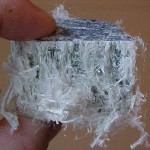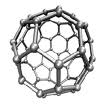 Last week, the news media reported the results of a study conducted by Navy Capt. Mark Lyles, the chair of medical sciences and biotechnology at the Center for Naval Warfare Studies at the Naval War College, which purported to explain the cause of a wide range of symptoms and illnesses experienced by current and former U.S. troops in Iraq, Afghanistan, and Kuwait. Minute dust particles containing toxic metals, bacteria, and other substances may be responsible for such health problems as cancers, respiratory ailments, heart disease, and neurological conditions in vets. The key to the particular toxicity of the substances, as contained in the dust, is thought to be the tiny size of the particles. For various reasons, the dust in that region of the world is much finer than ordinary dust, and the tiny particles are easily inhaled deep into the lungs, where disease processes can begin.
Last week, the news media reported the results of a study conducted by Navy Capt. Mark Lyles, the chair of medical sciences and biotechnology at the Center for Naval Warfare Studies at the Naval War College, which purported to explain the cause of a wide range of symptoms and illnesses experienced by current and former U.S. troops in Iraq, Afghanistan, and Kuwait. Minute dust particles containing toxic metals, bacteria, and other substances may be responsible for such health problems as cancers, respiratory ailments, heart disease, and neurological conditions in vets. The key to the particular toxicity of the substances, as contained in the dust, is thought to be the tiny size of the particles. For various reasons, the dust in that region of the world is much finer than ordinary dust, and the tiny particles are easily inhaled deep into the lungs, where disease processes can begin.
Although these dust particles are not the same as nanoparticles, this study raises a red flag about the need for caution about exposures to nanoparticles, whether in the workplace or the environment. As repeatedly noted in this blog, the size of nanoparticles is key to their behavior, and some early studies have indicated that toxicity may increase as the size of particles decreases. As the President’s Cancer Panel stated in its 2008-2009 Annual Report, the small size of nanoparticles means that “they can be inhaled, ingested, and absorbed through the skin, entering the blood stream, penetrating cells throughout the body (including the brain), and perhaps interfering with DNA processes.” (p. 40) In the environment, the particles could potentially wreak ecological havoc. Several studies have shown that some kinds of nanoparticles have leached into the environment, thus red-flagging the need for determining exactly how they affect the environment.
It is a fact of contemporary life that devastating results could come from exposure to engineered particles just as much as from biological organisms or a toxic soup of substances in the soil-dust of the planet. With engineered nanomaterials, it is currently anyone’s guess as to when, how, or if such devastating results could occur.
At best, this new study of war dust is a reminder of the present, urgent need to conduct health and safety studies on nanomaterials. At worst, it is a portent of things to come.
For a news report on the Navy researcher’s results, see
http://www.usatoday.com/news/military/2011-05-11-Iraq-Afghanistan-dust-soldiers-illnesses_n.htm
 When it comes to new technologies, government goals are to both encourage innovation and assure the safety of the public. Achieving the right balance between these goals is often a challenge.
When it comes to new technologies, government goals are to both encourage innovation and assure the safety of the public. Achieving the right balance between these goals is often a challenge. Earlier
Earlier This post continues the discussions in earlier posts about evidentiary
This post continues the discussions in earlier posts about evidentiary  A couple of weeks ago, the International Organization for Standardization (ISO) announced the adoption of standards for some testing of nanoparticles. Specifically the organization, based in Geneva, set standards for studying the inhalation toxicity of these substances. The United States is a member of the ISO, through the American National Standards Institute (ANSI). Of course, the new standard has no binding effect on governments and their regulatory agencies, unless it is adopted.
A couple of weeks ago, the International Organization for Standardization (ISO) announced the adoption of standards for some testing of nanoparticles. Specifically the organization, based in Geneva, set standards for studying the inhalation toxicity of these substances. The United States is a member of the ISO, through the American National Standards Institute (ANSI). Of course, the new standard has no binding effect on governments and their regulatory agencies, unless it is adopted.
 On November 30, 2010, the American Industrial Hygiene Association (AIHA), in commenting on the
On November 30, 2010, the American Industrial Hygiene Association (AIHA), in commenting on the 
